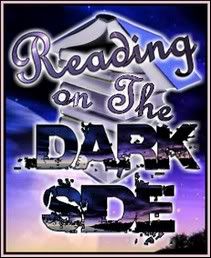 Happy Autumn Equinox or for all the Wiccans of the world- Blessed Mabon! The holiday of the autumnal equinox, Mabon, is a Pagan ritual of thanksgiving for the fruits of the earth and a recognition of the need to share them to secure the blessings of the Goddess and the God during the coming winter months. Among the sabbats, it is the second of the three Pagan harvest festivals, preceded by Lammas / Lughnasadh and followed by Samhain. Mabon is considered a time of the Mysteries. It is a time to honor Aging Deities and the Spirit World.
Happy Autumn Equinox or for all the Wiccans of the world- Blessed Mabon! The holiday of the autumnal equinox, Mabon, is a Pagan ritual of thanksgiving for the fruits of the earth and a recognition of the need to share them to secure the blessings of the Goddess and the God during the coming winter months. Among the sabbats, it is the second of the three Pagan harvest festivals, preceded by Lammas / Lughnasadh and followed by Samhain. Mabon is considered a time of the Mysteries. It is a time to honor Aging Deities and the Spirit World.The name Mabon was coined by Aidan Kelly around 1970 as a reference to Mabon ap Modron, a character from Welsh mythology. the son of Modron and a member of Arthur's war band. Both he and his mother were likely deities in origin, descending from a divine mother–son pair. His name is related to the Romano-British god Maponos, whose name means "divine son"; Modron, in turn, is likely related to the Gaulish goddess Dea Matrona. He is often equated with the Demetian hero Pryderi fab Pwyll, and may be associated with the minor Arthurian character Mabon fab Mellt.
The Druids call this celebration, Mea'n Fo'mhair, and honor the The Green Man, the God of the Forest, by offering libations to trees. Offerings of ciders, wines, herbs and fertilizer are appropriate at this time. Wiccans celebrate the aging Goddess as she passes from Mother to Crone, and her consort the God as he prepares for death and re-birth. Various other names for this Lesser Wiccan Sabbat are The Second Harvest Festival, Wine Harvest, Feast of Avalon, Equinozio di Autunno (Strega), Alben Elfed (Caledonii), or Cornucopia. At this festival it is appropriate to wear all of your finery and dine and celebrate in a lavish setting. It is the drawing to and of family as we prepare for the winding down of the year at Samhain. It is a time to finish old business as we ready for a period of rest, relaxation, and reflection.
Symbolism of Mabon:
Second Harvest, the Mysteries, Equality and Balance.
Symbols of Mabon:
wine, gourds, pine cones, acorns, grains, corn, apples, pomegranates, vines such as ivy, dried seeds, and horns of plenty.
Herbs of Maybon:
Acorn, benzoin, ferns, grains, honeysuckle, marigold, milkweed, myrrh, passionflower, rose, sage, solomon's seal, tobacco, thistle, and vegetables.
Foods of Mabon:
Breads, nuts, apples, pomegranates, and vegetables such as potatoes, carrots, and onions.
Incense of Mabon:
Autumn Blend-benzoin, myrrh, and sage.
Colors of Mabon:
Red, orange, russet, maroon, brown, and gold.
Stones of Mabon:
Sapphire, lapis lazuli, and yellow agates.
Activities of Mabon:
Making wine, gathering dried herbs, plants, seeds and seed pods, walking in the woods, scattering offerings in harvested fields, offering libations to trees, adorning burial sites with leaves, acorns, and pine cones to honor those who have passed over.
Spellworkings of Mabon:
Protection, prosperity, security, and self-confidence. Also those of harmony and balance.
Deities of Mabon:
Goddesses-Modron, Morgan, Epona, Persephone, Pamona and the Muses. Gods-Mabon, Thoth, Thor, Hermes, and The Green Man.





No comments:
Post a Comment